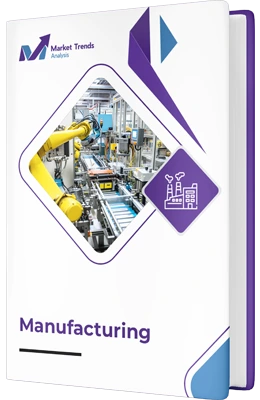
The 3D Printing Materials and Equipment Market size was valued at USD 15.2 billion in 2024 and is projected to reach USD 45.8 billion by 2033, growing at a compound annual growth rate (CAGR) of 14.2% from 2025 to 2033. This robust expansion reflects increasing adoption across diverse industries, driven by technological advancements, industry-specific innovations, and a shift towards decentralized manufacturing. Market penetration strategies focusing on high-performance materials and smart equipment are fueling growth, alongside rising investments in research and development. Regulatory compliance and sustainability initiatives are also shaping the future landscape, making this a pivotal period for stakeholders aiming to capitalize on emerging opportunities.
3D Printing Materials and Equipment encompass the raw substances and machinery used to create three-dimensional objects through additive manufacturing processes. Materials include thermoplastics, photopolymers, metals, ceramics, and composites tailored for specific applications. Equipment comprises a range of 3D printers, from desktop models to large-scale industrial systems, equipped with advanced features such as multi-material capabilities, high precision, and automation. These components work synergistically to enable rapid prototyping, customized production, and complex geometries that traditional manufacturing cannot achieve. The evolution of these materials and equipment is central to unlocking innovative solutions across aerospace, healthcare, automotive, and consumer sectors.
The 3D printing materials and equipment market is experiencing transformative trends driven by technological innovation and shifting industry demands. The integration of AI and IoT into 3D printers enhances process efficiency and predictive maintenance, fostering smarter manufacturing ecosystems. Sustainability is gaining prominence, with biodegradable and recyclable materials gaining traction to meet regulatory and consumer expectations. The rise of bio-printing and multi-material systems is expanding application horizons, especially in healthcare and aerospace. Additionally, the democratization of 3D printing through affordable desktop solutions is accelerating adoption among small and medium-sized enterprises, fostering a more inclusive innovation landscape.
The expansion of the 3D printing materials and equipment market is primarily fueled by the need for rapid prototyping, customization, and complex geometries that traditional manufacturing cannot efficiently produce. Increasing investments in Industry 4.0 initiatives and digital transformation are pushing industries toward additive manufacturing solutions. Regulatory shifts promoting sustainable practices and material safety standards are also propelling innovation and adoption. Moreover, the rising demand for lightweight, high-strength components in aerospace and automotive sectors is driving the development of advanced materials. The proliferation of 3D printing in healthcare, especially in personalized medicine and bioprinting, further accelerates market growth. Strategic collaborations and government funding initiatives are reinforcing these drivers, creating a fertile environment for market expansion.
Despite promising growth prospects, the 3D printing materials and equipment market faces several challenges. High capital expenditure and operational costs associated with advanced 3D printers and specialized materials can hinder widespread adoption, especially among small and medium enterprises. The lack of standardized testing and certification protocols for new materials raises concerns about quality and regulatory compliance. Material limitations, such as limited durability, mechanical strength, or biocompatibility, restrict application scopes in critical sectors. Additionally, technological complexities and the need for skilled personnel pose barriers to entry. Intellectual property concerns and the nascent state of some industry-specific regulations further complicate market expansion efforts.
The evolving landscape of 3D printing presents numerous opportunities for market players to innovate and expand. The development of new, high-performance, and sustainable materials opens avenues for applications in aerospace, healthcare, and consumer goods. The integration of 3D printing with emerging technologies such as AI, machine learning, and robotics can optimize production workflows and reduce costs. Growing demand for customized products and on-demand manufacturing supports niche markets and local supply chains. The expansion of bio-printing and regenerative medicine offers transformative potential in healthcare. Furthermore, strategic collaborations, government incentives, and increasing industry-specific standards are fostering an environment conducive to innovation and market penetration.
Looking ahead to 2026 and beyond, the 3D printing materials and equipment market is poised to revolutionize manufacturing paradigms through smart, adaptive, and highly specialized solutions. The future envisions a seamless integration of additive manufacturing into Industry 5.0, emphasizing human-centric, sustainable, and highly automated processes. Applications will extend into personalized medicine, aerospace innovations, sustainable construction, and consumer electronics, driven by breakthroughs in bio-printing, nanomaterials, and multi-material systems. The proliferation of decentralized manufacturing hubs powered by portable and affordable 3D printers will democratize production, fostering local economies and reducing supply chain vulnerabilities. As regulatory frameworks mature, industry standards will catalyze widespread adoption, enabling new business models rooted in customization, rapid iteration, and circular economy principles.
The 3D Printing Materials and Equipment Market was valued at USD 15.2 billion in 2024 and is projected to reach USD 45.8 billion by 2033, growing at a compound annual growth rate (CAGR) of 14.2% from 2025 to 2033.
Demand for rapid prototyping and on-demand manufacturing, Industry 4.0 and digital transformation initiatives, Regulatory support for sustainable and safe materials, Growing need for lightweight, high-performance components, Expansion of personalized healthcare and bioprinting, Government funding and strategic industry collaborations.
The Top players operating in the Stratasys Ltd., 3D Systems Corporation, EOS GmbH, Materialise NV, HP Inc., SLM Solutions Group AG, Renishaw plc.
3D Printing Materials and Equipment Market segmented based on Material Type, Equipment Type, End-Use Industry And Geography.
The sample report for the 3D Printing Materials and Equipment Market can be obtained on demand from the website. Also, the 24*7 chat support & direct call services are provided to procure the sample report.